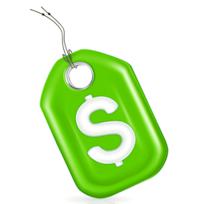We are now officially in our 19th year! From
but a small acorn 19 years ago, SFI has grown into a tall and mighty oak
tree, with strong and deep roots. But you ain’t seen nothin’
yet…because we planted an entire FOREST…and it’s spreading across every
country in the world.
Happy anniversary to SFI and all its thousands of awesome affiliates across the globe!
SFI President & Founder Gery Carson remembers the day SFI was born:
 “As
an entrepreneur, there have been very few holidays where I haven’t
worked at least a few hours, and this day in 1998 was no different. I
went into my home office that morning planning to spend a few casual
hours–on nothing in particular. It was a holiday after all, and no one
else on my staff at the time was working. So it was just going to be a
relaxing day where I’d let my mind have a break from the typical daily
grind.
“As
an entrepreneur, there have been very few holidays where I haven’t
worked at least a few hours, and this day in 1998 was no different. I
went into my home office that morning planning to spend a few casual
hours–on nothing in particular. It was a holiday after all, and no one
else on my staff at the time was working. So it was just going to be a
relaxing day where I’d let my mind have a break from the typical daily
grind.
I remember at
the time that affiliate programs were becoming a big deal, thanks to
the Internet, which made it very easy to track sales using affiliate
links. Numerous big-name companies were now employing affiliate
programs as a part of their marketing strategy. And I thought…why not
us, too?!
I remember
being particularly impressed with Amazon.com’s affiliate program. The
word was, they had 60,000 affiliates. 60,000! At the time, that number
seemed enormous to me, a nearly impossible number. But I couldn’t have
been more wrong of course because, in just a couple years, we would be
experiencing days where we’d sign up over 60,000 affiliates in a single day!
But on this
morning, I was simply sketching out a few basics on how our affiliate
program would work. At the time, we were publishing our magazine, Six Figure Income,
which featured exclusive interviews with home-based entrepreneurs who
were earning at least $100,000 USD annually from their business. This
magazine was essentially our one and only product. By the way, it’s
from the magazine’s name that the SFI Marketing Group name came to be (a
few years later we changed the initials to stand for Strong Future
International to better align with our vision for the program).

Six Figure Income
magazine’s premier issue was the March/April 1998 issue. Prior to
this, and stretching all the way back to 1986, we had published other
newsletters and magazines devoted primarily to mail order entrepreneurs,
including Mail Dealer Newsletter, Mail Profits Magazine, and Profits Magazine.
During those years, marketing by mail was the “Internet” for many
entrepreneurs. All the marketing we do today on the Web; in those
years, at least for entrepreneurs like myself, was all mail-based (with a
little bit of help from phone, fax, and conference calls).
Six Figure Income
magazine was published just four times per year, and a one-year
subscription was $49, so we had a healthy margin…enough margin to pay a
handsome commission to anyone who wished to be an affiliate of ours and
sell subscriptions.
Within days
of deciding to create our affiliate program, I had published information
on how to sign up online (supplemented, if I recall correctly, with a
small direct mail campaign ironically). To my pleasant surprise,
sign-ups starting coming in almost immediately. Not a lot, maybe a
dozen or two a week, but that number rapidly accelerated. Soon it was
hundreds of sign-ups a day, then thousands, then tens of thousands!
 Driving
this now hyper-growth was our decision to expand the program and
compensation plan–many of the details of which were hammered out during a
weekend at SFI affiliate Steven Sashen’s Boulder, Colorado, home with
affiliates Gump Wallen and the late, great Richard Strayer (we miss you,
Rich!). By January 2001, we had exceeded one MILLION affiliates. By the way, with our most recently assigned ID number, over 16 million others have joined SFI since, more than 17 million in total!
Driving
this now hyper-growth was our decision to expand the program and
compensation plan–many of the details of which were hammered out during a
weekend at SFI affiliate Steven Sashen’s Boulder, Colorado, home with
affiliates Gump Wallen and the late, great Richard Strayer (we miss you,
Rich!). By January 2001, we had exceeded one MILLION affiliates. By the way, with our most recently assigned ID number, over 16 million others have joined SFI since, more than 17 million in total!
Yet, like
many great accomplishments, it all started with a simple idea, a simple
inspiration. Today, SFI is the online home for millions of
entrepreneurs from every country in the world. Indeed, SFI today is
very possibly the largest and most successful affiliate program in the
world. Aim high and dream big indeed!”
 Did you miss out on the most recent Spin & Win contest, held between August 14, 2017 through August 16, 2017?
Affiliates who spotted the Spin & Win notice–announced in the
weekly SFI Affiliate Newsletter, mailed out Monday, August 14–and who
entered the free contest grabbed 39,530 free VP!
Did you miss out on the most recent Spin & Win contest, held between August 14, 2017 through August 16, 2017?
Affiliates who spotted the Spin & Win notice–announced in the
weekly SFI Affiliate Newsletter, mailed out Monday, August 14–and who
entered the free contest grabbed 39,530 free VP!

 Driving
this now hyper-growth was our decision to expand the program and
compensation plan–many of the details of which were hammered out during a
weekend at SFI affiliate Steven Sashen’s Boulder, Colorado, home with
affiliates Gump Wallen and the late, great Richard Strayer (we miss you,
Rich!). By January 2001, we had exceeded one MILLION affilia
Driving
this now hyper-growth was our decision to expand the program and
compensation plan–many of the details of which were hammered out during a
weekend at SFI affiliate Steven Sashen’s Boulder, Colorado, home with
affiliates Gump Wallen and the late, great Richard Strayer (we miss you,
Rich!). By January 2001, we had exceeded one MILLION affilia
